The Role of Pottery in Anthropology: What We Can Learn
This article explores the significance of pottery in anthropology, examining how it serves as a vital artifact for understanding cultural practices, social structures, and historical contexts across various civilizations.
Pottery has been a fundamental aspect of human history, providing insights into ancient societies' daily lives, trade practices, and technological advancements. Its durability makes it a key resource for archaeologists. Imagine wandering through a dusty excavation site and unearthing a beautifully crafted pot; that single artifact can unlock a treasure trove of information about the people who created and used it. From the styles of decoration to the materials used, pottery tells stories that written records sometimes overlook.
Different pottery styles and techniques reflect the cultural identities of societies. This section delves into how pottery reveals information about social norms, rituals, and artistic expressions within various communities. Think of pottery as a cultural fingerprint—each design and technique is unique to its maker, representing their beliefs, traditions, and environment. For example, the intricate patterns found on Native American pottery often symbolize elements of nature, while ancient Greek pottery frequently depicted mythological scenes, showcasing the values and stories important to those cultures.
Pottery styles vary significantly across regions, influenced by local resources and cultural interactions. Understanding these variations helps anthropologists trace migration patterns and cultural exchanges throughout history. For instance, the distinct red clay pottery of the Southwest U.S. differs vastly from the porcelain of East Asia, not just in appearance but also in the techniques used to create them. These differences can tell us about the trade routes that existed, the materials available, and how communities adapted to their surroundings.
The choice of materials in pottery production varies by region and reflects both environmental availability and cultural preferences. This section examines how these materials influence pottery's aesthetic and functional qualities. For example, in areas rich in clay, artisans might craft thick, durable vessels, while those with access to finer materials might produce delicate, intricate designs. The types of glazes and finishes used also speak volumes about technological advancements and artistic priorities in different cultures.
Pottery-making techniques, such as coiling, slab building, and wheel throwing, reveal technological advancements and craftsmanship. This discussion highlights how these methods differ across cultures and time periods. Each technique offers a glimpse into the innovation and creativity of the potters. For instance, the wheel-throwing technique, which emerged in ancient Mesopotamia, revolutionized pottery making, allowing for more uniform and intricate designs, thus enhancing the functionality and beauty of everyday items.
Pottery often carries symbolic meanings and is used in rituals. This section explores how specific designs and forms are tied to cultural beliefs and practices, enhancing our understanding of spirituality in ancient societies. Think about how a simple bowl can transform into a sacred object when used in a ritual. The shapes, colors, and motifs chosen by the potter can reflect the community's spiritual beliefs, making pottery a crucial element in understanding their worldview.
The role of pottery in trade networks offers insights into economic systems. This section discusses how pottery production and distribution reflect broader economic practices and social hierarchies in ancient civilizations. Pottery was not just functional; it was a commodity that facilitated trade. The presence of pottery shards in archaeological sites often indicates trade routes and economic exchanges between different cultures, revealing the interconnectedness of ancient societies.
Examining ancient trade routes reveals how pottery was exchanged among different cultures. This analysis helps us understand the interconnectedness of societies and the spread of ideas through material culture. For example, the discovery of similar pottery styles across distant regions can imply that these communities were engaged in trade or cultural exchange, thereby enriching our understanding of their interactions.
Pottery was often a valuable commodity in ancient economies. This section investigates how its production and trade impacted social structures and economic relationships within and between communities. The value of pottery often went beyond its practical use; it could signify wealth and status. In some cultures, owning specific types of pottery could elevate one's social standing, thereby influencing the dynamics of power and trade.
- What is the significance of pottery in anthropology? Pottery serves as a crucial artifact that provides insights into cultural practices, social structures, and historical contexts of various civilizations.
- How do archaeologists use pottery to understand ancient societies? Archaeologists analyze the materials, styles, and techniques of pottery to gather information about trade, daily life, and technological advancements in ancient cultures.
- What can pottery tell us about cultural identity? Pottery styles and decorations often reflect the values, beliefs, and artistic expressions of a society, acting as a cultural fingerprint.
- How did pottery influence trade in ancient economies? Pottery was a valuable commodity that facilitated trade, revealing economic relationships and social hierarchies within and between communities.

The Historical Significance of Pottery
Pottery has been a fundamental aspect of human history, serving as a window into the daily lives of ancient societies. From the earliest days of civilization, humans have crafted pottery not just for utility but as a form of expression. Imagine walking into a bustling ancient market, where the vibrant colors and intricate designs of pottery tell stories of the people who made them. Each piece is a narrative, a snapshot of cultural practices, trade interactions, and technological advancements.
The durability of pottery makes it a key resource for archaeologists who seek to unravel the mysteries of the past. Unlike organic materials that decay over time, pottery can withstand the test of time, often remaining intact for thousands of years. This resilience allows researchers to analyze pottery fragments and glean insights about ancient lifestyles, including dietary habits, social structures, and even religious practices. For instance, the presence of certain cooking pots can indicate what types of food were prevalent in a particular region, while decorative ceramics may reflect the artistic inclinations and beliefs of a community.
Moreover, pottery serves as a time capsule of technological innovation. Throughout history, the methods of pottery production have evolved, showcasing advancements in materials and techniques. From the early hand-built forms to the introduction of the potter's wheel, each transition marks a significant leap in human ingenuity. This evolution is not just about the physical artifacts; it represents a shift in societal organization and the complexity of human interaction.
To understand the historical significance of pottery, we must also consider its role in trade. Pottery was not just a local craft; it became a valuable commodity that facilitated economic exchange across vast distances. Ancient trade routes often included pottery as a primary item of exchange, linking different cultures and allowing for the dissemination of ideas and technologies. For example, the spread of specific pottery styles can be traced along trade routes, revealing patterns of migration and cultural interaction.
In summary, pottery is more than just clay molded into shape; it is a vessel of history that encapsulates the essence of human civilization. It provides a tangible connection to our ancestors, offering glimpses into their daily lives, beliefs, and interactions. As we delve deeper into the study of pottery, we unlock the doors to understanding the complexities of human development and cultural evolution.

Pottery as a Cultural Indicator
When we think about pottery, we often picture beautiful vases or intricate bowls, but there’s so much more beneath the surface. Pottery serves as a cultural indicator, offering a window into the lives, beliefs, and practices of ancient societies. Each piece of pottery tells a story, revealing information about the people who created it—what they valued, how they lived, and even their social structures. Imagine holding a vessel that has been shaped by hands long gone; it’s like touching a piece of history that speaks volumes about its makers.
Different pottery styles and techniques reflect the cultural identities of societies. For instance, the decorative motifs on a pot can signify the community's beliefs, rituals, and even their interactions with neighboring cultures. Take, for example, the vibrant designs of Native American pottery, which often incorporate elements of nature and spiritual symbolism. These designs are not just for aesthetics; they serve as a medium through which cultural narratives are expressed and preserved.
Furthermore, pottery can indicate social norms and practices. In some cultures, specific pottery forms are used exclusively in rituals or ceremonies, while others may be everyday items. This distinction can reveal a lot about how a society prioritizes its traditions. For instance, in ancient Egypt, certain types of pottery were reserved for religious offerings, highlighting the importance of spirituality in their daily lives. By examining these artifacts, anthropologists can gain insights into the values and priorities of a community.
Interestingly, the materials used in pottery production also play a significant role in cultural expression. The choice of clay, glazes, and decorative techniques often depends on what is locally available, which means that pottery can reflect the environmental context of a society. For example, the use of red clay in Mesoamerican pottery is not only a stylistic choice but also a reflection of the natural resources available in that region. This connection between environment and culture demonstrates how communities adapt their artistic expressions to their surroundings.
To further illustrate the role of pottery as a cultural indicator, let’s consider a few key aspects:
- Design Patterns: Unique motifs can signify different tribes or regions.
- Functional Use: The purpose of pottery can reveal social hierarchies; for instance, decorative pieces may be reserved for the elite.
- Technological Advances: The evolution of pottery techniques can indicate shifts in societal sophistication and resource management.
In summary, pottery is much more than just a functional item; it’s a reflection of cultural identity. By studying pottery, anthropologists can piece together the intricate puzzle of human history, revealing how communities interacted, evolved, and expressed their unique identities through art. Each shard and fragment provides a glimpse into the past, allowing us to appreciate the rich tapestry of human culture.
Q: How does pottery help in understanding ancient cultures?
A: Pottery reveals a lot about daily life, trade practices, and social structures, offering insights into the values and beliefs of ancient societies.
Q: What can the designs on pottery tell us?
A: The designs can indicate cultural beliefs, social norms, and even the environmental context of the society that created them.
Q: Why is pottery considered durable?
A: Pottery is made from clay, which, once fired, becomes hard and long-lasting, making it an excellent resource for archaeologists.
Q: Are there specific pottery styles that indicate certain regions?
A: Yes, pottery styles vary greatly across regions, influenced by local resources and cultural interactions, allowing anthropologists to trace migration patterns and cultural exchanges.
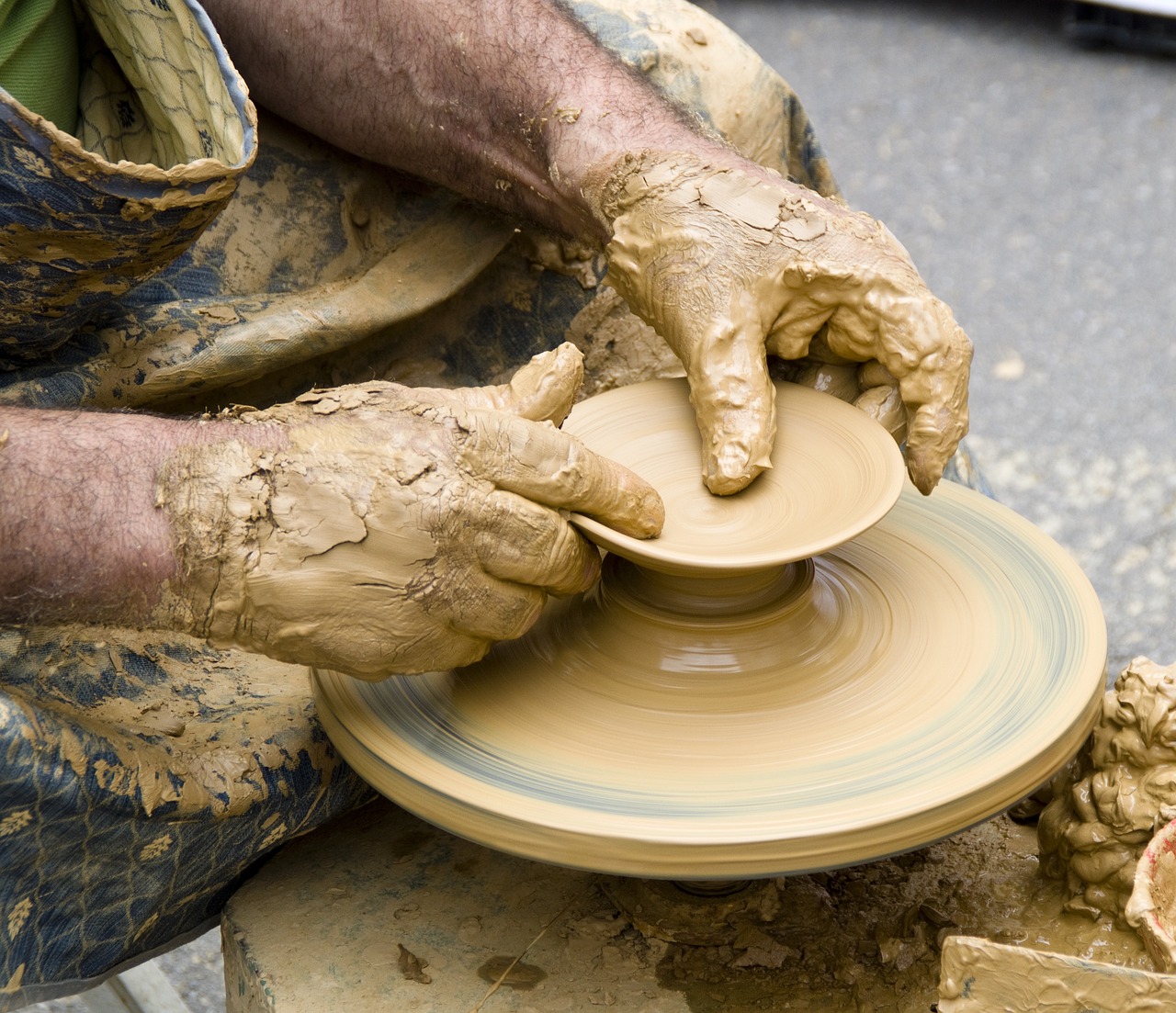
Regional Variations in Pottery Styles
When we delve into the world of pottery, we quickly discover that it is not just a simple craft but a vibrant tapestry woven from the threads of culture, geography, and history. are like fingerprints of different civilizations, each telling a unique story about the people who created them. From the intricate designs of ancient Greek amphorae to the earthy tones of Native American pottery, these artifacts reveal much about the societies that produced them.
One of the most fascinating aspects of pottery is how it reflects the local resources available in a region. For instance, the clay found in the Mediterranean is vastly different from that in the Americas, influencing not only the texture and color of the pottery but also the techniques used in its creation. In areas where fine clay is abundant, potters may create delicate, thin-walled vessels that showcase their skill. Conversely, regions with coarser clay might produce sturdier, more functional pieces designed for everyday use.
Moreover, the cultural interactions between neighboring communities can significantly impact pottery styles. Imagine a bustling trade route where artisans exchange ideas and techniques as freely as they exchange goods. This cultural exchange often leads to the blending of styles, resulting in hybrid pottery forms that embody the best of both worlds. For example, the pottery of the Silk Road illustrates how influences from Chinese, Persian, and Indian cultures merged, creating stunning pieces that were both beautiful and functional.
To better illustrate these regional variations, consider the following table that highlights some key differences in pottery styles across various cultures:
| Region | Characteristics | Common Techniques |
|---|---|---|
| Middle East | Intricate geometric patterns and vibrant glazes | Wheel throwing, glazing |
| East Asia | Fine porcelain, often with delicate floral designs | Slip casting, hand painting |
| Native America | Earthy tones, often depicting natural motifs | Coiling, pit firing |
| Europe | Functional stoneware, often with utilitarian designs | Throwing, glazing |
Each of these styles tells us something profound about the people who made them. For example, the intricate geometric patterns of Middle Eastern pottery not only serve as decoration but also reflect the cultural emphasis on mathematics and symmetry in that region. On the other hand, the earthy tones of Native American pottery often symbolize a deep connection to nature, illustrating the spiritual beliefs that guide these communities.
In conclusion, offer a fascinating glimpse into the lives of ancient peoples. By studying these artifacts, anthropologists can piece together the puzzle of human history, revealing how geography, culture, and trade shaped societies in ways we are still uncovering today. So next time you admire a piece of pottery, remember that you are looking at a story—a story that spans centuries and continents, connecting us all through the art of clay.
- What is the significance of pottery in anthropology? Pottery serves as a vital artifact that helps anthropologists understand cultural practices, social structures, and historical contexts.
- How do regional variations in pottery styles influence our understanding of ancient cultures? They reveal insights into local resources, cultural interactions, and the technological advancements of different societies.
- What materials are commonly used in pottery production? Common materials include various types of clay, glazes, and sometimes organic materials like sand or ash for texture.
- What are some common pottery-making techniques? Techniques include coiling, slab building, and wheel throwing, each reflecting the skills and traditions of the culture.
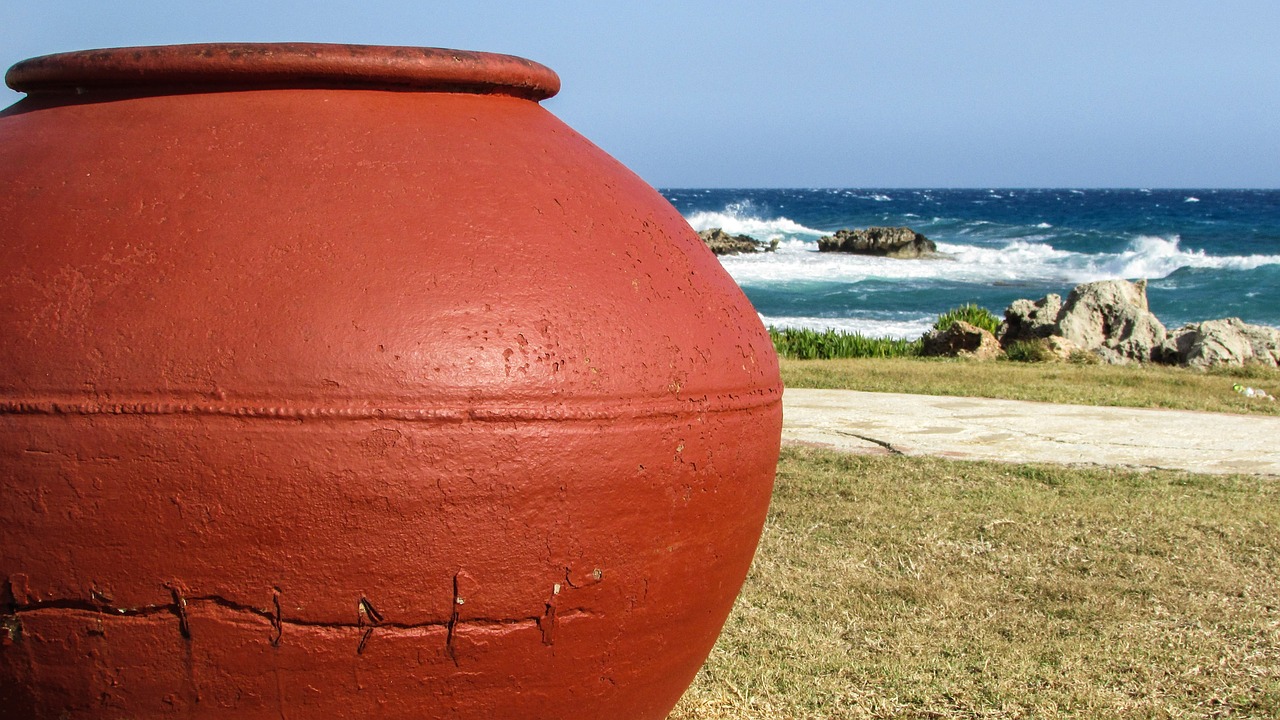
Materials Used in Pottery Production
When we dive into the world of pottery, one of the first things that captures our attention is the variety of materials used in its production. The choice of materials isn't just a matter of preference; it reflects the environmental conditions and available resources of a region. For instance, in areas rich in clay deposits, artisans often utilized local clays, which varied in color and texture, leading to distinct pottery styles that are unique to specific cultures.
Among the most common materials used in pottery production are:
- Clay: This is the primary material, and its type can significantly affect the final product. For example, earthenware clay is typically more porous, while stoneware clay is denser and more durable.
- Temper: To enhance the strength and workability of clay, potters often add tempering agents such as sand, crushed shells, or even organic materials. This not only improves the structural integrity of the pottery but also influences its firing temperature.
- Glazes: These are applied to the surface of pottery to create a glassy finish. Glazes can be made from various minerals and oxides, which contribute to the color and texture of the final piece.
Interestingly, the choice of materials often reflects the cultural preferences and technological advancements of a society. For instance, the use of specific glazes in ancient China not only showcased artistic expression but also indicated the potter's mastery over chemistry and kiln technology. Similarly, the incorporation of unique tempering materials can tell us much about the trade networks and interactions between different cultures. For example, the use of crushed shells in pottery found in coastal regions suggests a close relationship with the marine environment and possibly trade with inland communities.
Furthermore, the firing techniques employed also play a crucial role in how these materials are transformed into pottery. Different firing methods, such as pit firing, kiln firing, or raku, can yield a wide range of finishes and textures, showcasing the potter's skill and the material's inherent qualities. This diversity in production techniques and materials leads to a rich tapestry of pottery styles that not only serve functional purposes but also act as a canvas for cultural expression.
In conclusion, the materials used in pottery production are not merely functional; they are a reflection of the environmental, cultural, and technological contexts of the societies that create them. By studying these materials, anthropologists can glean insights into the daily lives, trade practices, and artistic expressions of ancient cultures, making pottery an invaluable artifact in the study of human history.
- What types of clay are commonly used in pottery?
Common types of clay include earthenware, stoneware, and porcelain, each with distinct properties and uses.
- How does the choice of materials affect pottery?
The materials influence the pottery's durability, appearance, and functionality, impacting how it is used in daily life.
- What is the importance of glazes in pottery?
Glazes not only enhance the aesthetic appeal of pottery but also provide a protective layer, making the pieces more functional.
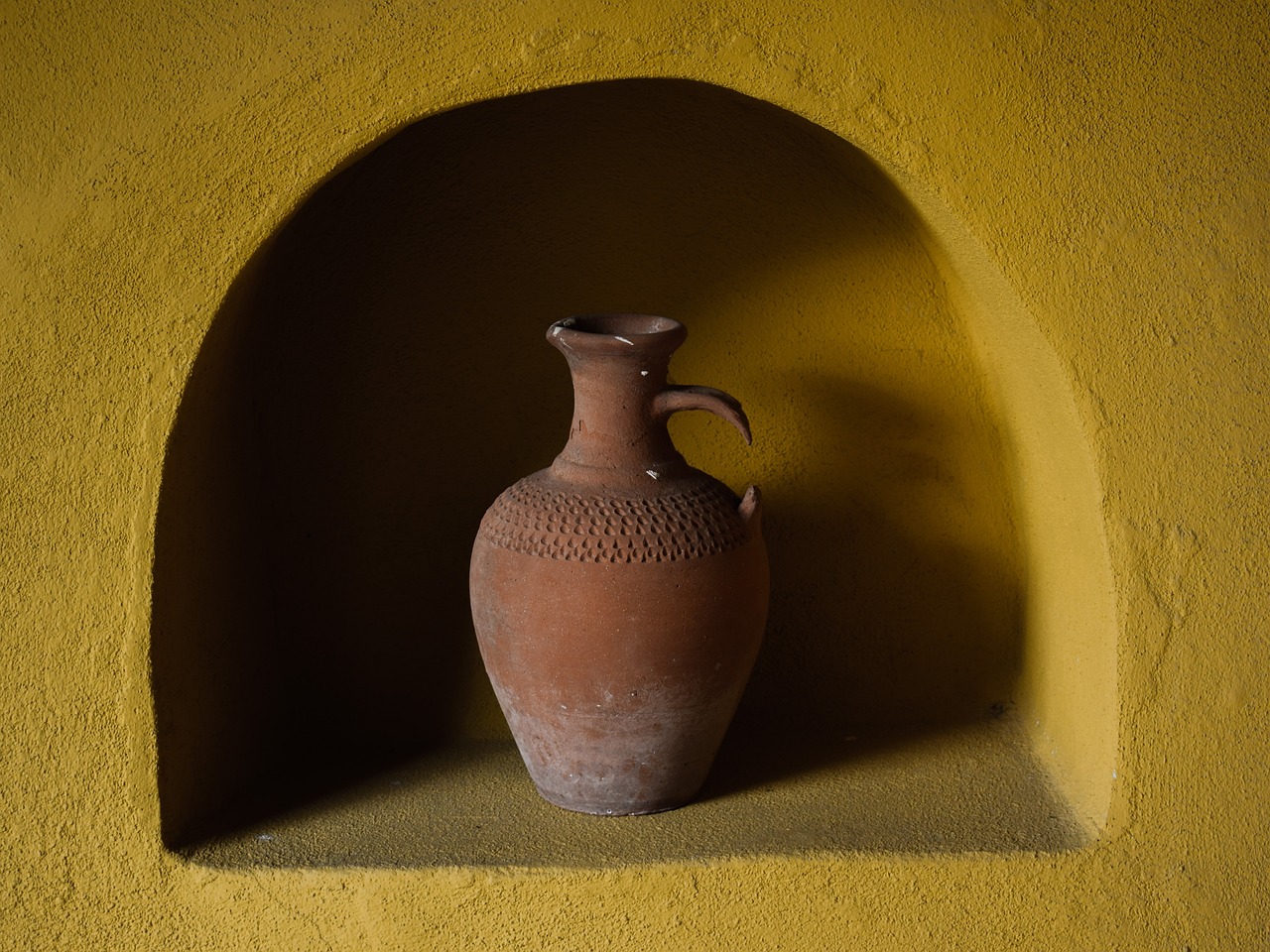
Techniques of Pottery Making
When we think about pottery, we often picture beautiful, handcrafted vessels that have stood the test of time. But what goes into creating these stunning pieces? The are as diverse as the cultures that produce them, each method revealing a unique story about the people behind the craft. From the ancient coiling methods to the modern wheel throwing techniques, pottery making is a fascinating blend of art and science.
One of the oldest techniques is coiling, where long, snake-like rolls of clay are stacked on top of each other to form the walls of a pot. This method not only allows for the creation of varied shapes but also showcases the potter's skill in manipulating the material. Imagine building a clay structure like you would a tower of blocks—it's about balance and creativity!
Another prevalent technique is slab building, where flat pieces of clay are cut and joined together to create forms. This method is particularly useful for making rectangular or geometric shapes, allowing potters to explore a different aesthetic. It’s like crafting a puzzle, where each piece must fit perfectly to create a cohesive design.
Then there’s the wheel throwing technique, which has revolutionized pottery making. Using a potter's wheel, artisans can spin the clay and shape it into symmetrical forms with remarkable precision. This method not only speeds up the process but also allows for a level of uniformity that is hard to achieve with hand-building techniques. Think of it as dancing with the clay—each spin and push creates a rhythm that brings the vessel to life.
Each of these techniques has its advantages and challenges. For instance, while coiling can be more time-consuming, it allows for greater artistic expression. On the other hand, wheel throwing can produce consistent results but may limit the potter's creativity in terms of shapes. This variety in techniques showcases the adaptability and innovation of potters across different cultures and eras.
Moreover, the choice of technique often reflects the cultural context and available resources. For example, communities with rich clay deposits may lean towards wheel throwing, while others in regions with limited resources might favor coiling or slab building. This relationship between technique and environment is a testament to the ingenuity of human societies in crafting functional and beautiful objects.
In summary, the techniques of pottery making are not merely methods of production; they are a window into the lives, beliefs, and environments of the people who create them. By studying these techniques, anthropologists can gain deeper insights into the social structures, cultural practices, and historical contexts of various civilizations.
- What is the oldest pottery technique? The oldest pottery technique is coiling, which dates back to prehistoric times.
- How does wheel throwing differ from hand-building? Wheel throwing uses a spinning wheel to create symmetrical forms, while hand-building techniques like coiling and slab building rely on manual shaping.
- What materials are commonly used in pottery making? Common materials include clay, water, and various additives like sand or grog to enhance texture and durability.
- Why is pottery significant in anthropology? Pottery serves as a vital artifact that provides insights into cultural practices, trade, and social structures of ancient societies.
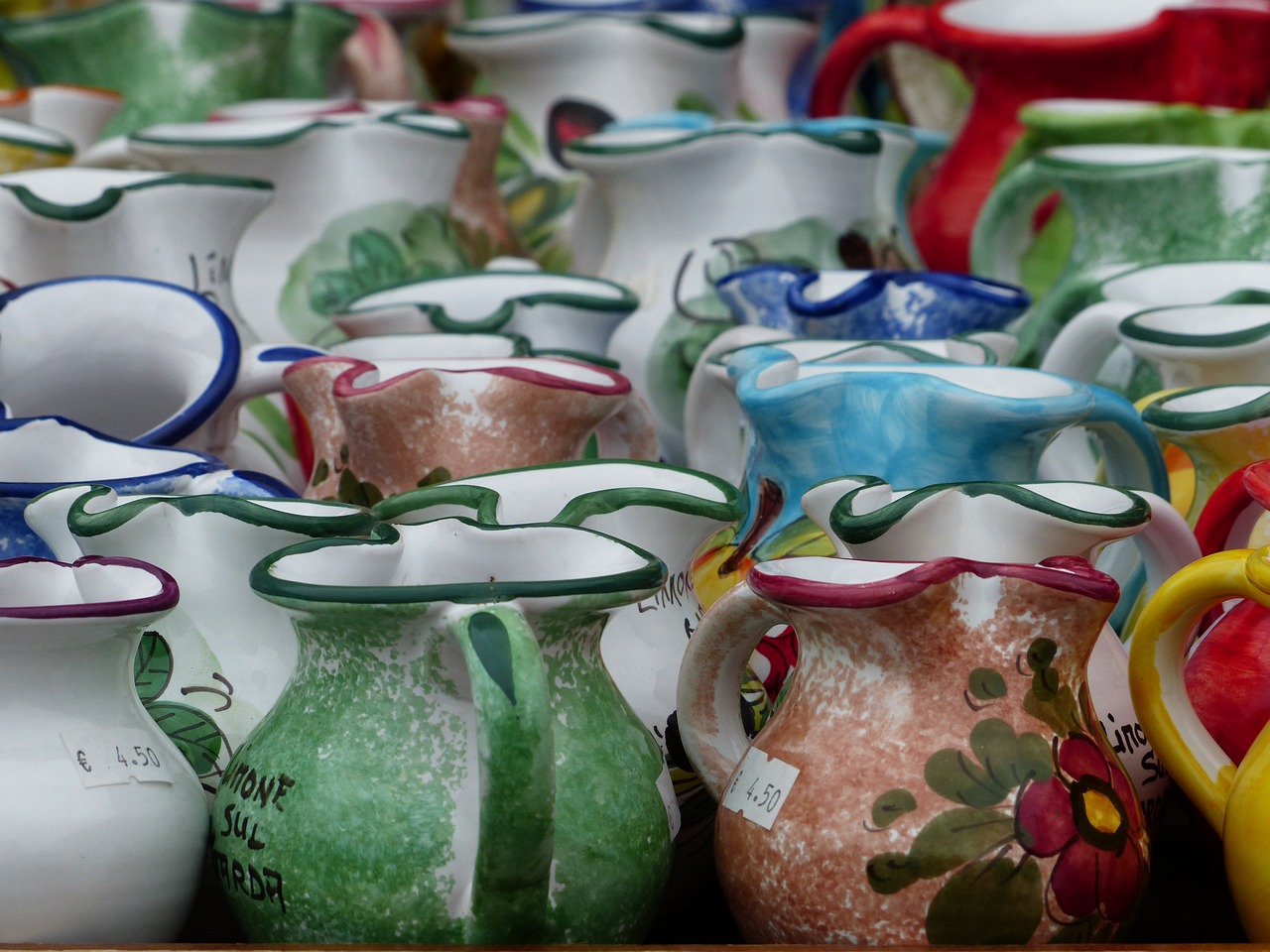
Symbolism and Ritual in Pottery
Pottery is not merely a functional object; it often embodies deep symbolic meanings that reflect the beliefs and values of the cultures that created it. Across various civilizations, pottery has been used in rituals, ceremonies, and as offerings to deities. For instance, the intricate designs and shapes of pottery can convey messages or tell stories that are significant to a community's identity and spirituality. Think of pottery as a canvas where cultural narratives are painted, each curve and color narrating a tale of its own.
In many ancient societies, specific pottery types were created for ritualistic purposes. These items often featured symbols that represented important aspects of life, such as fertility, death, and the afterlife. For example, in some Indigenous cultures, pottery adorned with motifs of animals or plants might symbolize a connection to nature and the spirit world. This intertwining of art and spirituality illuminates how pottery serves as a medium for expressing cultural values and beliefs. The designs are not just decorative; they are imbued with meaning, often reflecting the community’s worldview.
Moreover, the act of creating pottery itself can be seen as a ritualistic process. The techniques and methods used in pottery making—whether coiling, slab building, or wheel throwing—often involve traditional practices passed down through generations. These practices are frequently accompanied by ceremonies that honor the earth and the materials used, reinforcing the connection between the potter and their cultural heritage. The spiritual significance of pottery-making can transform a simple act into a profound ritual, where every shape and form is a reflection of the creator's identity.
To further illustrate this point, consider the following examples of how pottery is used in rituals across different cultures:
- Burial Ceremonies: In various ancient cultures, pottery was included in burial sites as offerings to the deceased, believed to assist them in the afterlife.
- Ritual Feasts: Specially crafted pottery was often used during communal feasts, symbolizing unity and shared cultural identity.
- Religious Offerings: Many cultures created specific pottery forms to be used as offerings in religious ceremonies, reflecting their devotion and beliefs.
In conclusion, pottery serves as a powerful artifact that encapsulates the symbolism and rituals of a culture. By examining the designs, materials, and contexts in which pottery is used, anthropologists can gain profound insights into the spiritual lives of ancient societies. The next time you come across a piece of pottery, remember that it may not just be a vessel; it could be a silent storyteller, whispering the tales of a culture's past.
Q: What does pottery symbolize in different cultures?
A: Pottery can symbolize various aspects of life, including fertility, spirituality, and community identity, often reflecting the cultural values and beliefs of the society that created it.
Q: How is pottery used in rituals?
A: Pottery is frequently used in rituals as offerings, during ceremonies, or as part of communal feasts, serving to enhance the spiritual significance of these events.
Q: What techniques are involved in pottery making?
A: Common techniques include coiling, slab building, and wheel throwing, each with its own cultural significance and historical context.
Q: Why is pottery important for anthropologists?
A: Pottery provides valuable insights into the daily lives, trade practices, and cultural beliefs of ancient societies, making it a crucial artifact for understanding human history.
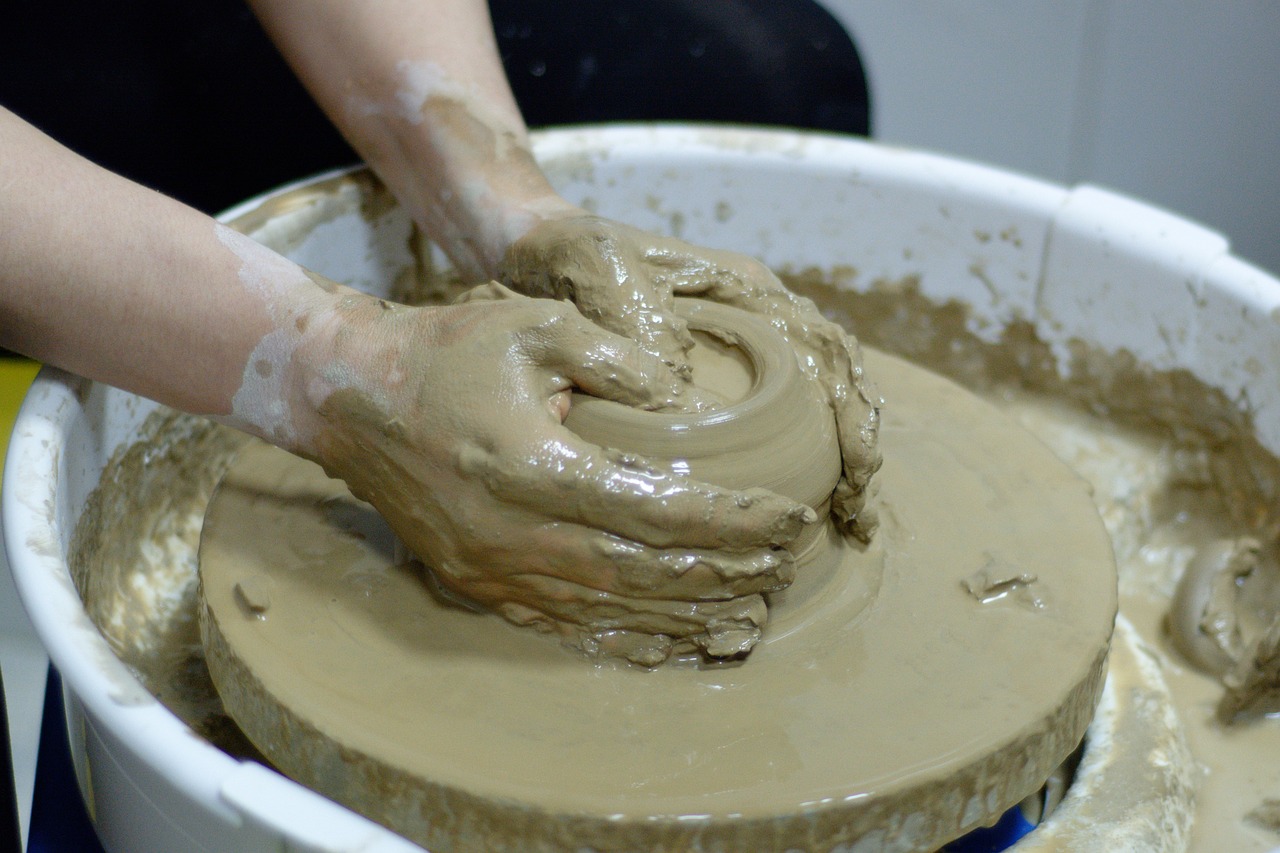
Pottery in Trade and Economy
Pottery has always played a pivotal role in the trade and economy of ancient civilizations. Its significance extends beyond mere functionality; it serves as a reflection of economic practices and social hierarchies. When we think of pottery, we often envision beautiful vessels and intricate designs, but these artifacts tell a much deeper story about the people who created and used them. For instance, the production and distribution of pottery were not just about creating utilitarian objects; they were integral to the economic framework of societies.
In many cultures, pottery was a valuable commodity. It was often traded not only within local communities but also across vast distances, indicating the interconnectedness of different societies. The presence of similar pottery styles in distant lands suggests that trade routes were established long before the advent of modern transportation. This exchange of pottery can be seen as a form of cultural currency, where the designs and techniques carried meanings that transcended geographical boundaries.
To illustrate the impact of pottery on trade, let's consider a few key aspects:
- Trade Routes: Ancient trade routes, such as the Silk Road, facilitated the exchange of pottery among diverse cultures. This not only spread artistic styles but also allowed for the sharing of techniques and materials.
- Economic Relationships: The demand for specific types of pottery often dictated economic relationships. Communities that specialized in pottery production could establish trade agreements, leading to a network of economic interdependence.
- Social Hierarchies: The quality and style of pottery often indicated social status. Fine ceramics were typically associated with the elite, while more utilitarian forms were used by the lower classes. This distinction reveals much about the social structure of a society.
Moreover, pottery production often required a significant investment of time and resources. Crafting pottery was not merely a hobby; it was a full-fledged occupation that contributed to the local economy. In many cultures, skilled potters were highly regarded, and their work could command high prices in the market. This economic significance further emphasizes how pottery was intertwined with the livelihoods of many individuals.
In addition to trade, pottery also played a crucial role in local economies. For example, in agricultural societies, pottery was essential for storing grains and liquids, making it a vital component of everyday life. The ability to produce durable and functional pottery directly influenced food storage and preservation, thereby impacting overall economic stability.
As we delve deeper into the study of pottery, we uncover a complex web of trade networks and economic relationships that shaped the development of ancient civilizations. Pottery serves as a tangible link to the past, revealing not only the artistic talents of our ancestors but also their economic strategies and social dynamics.
- What materials were commonly used in ancient pottery? Ancient potters used a variety of materials, including clay, sand, and minerals, which varied by region and availability.
- How did pottery influence trade in ancient societies? Pottery often served as a trade commodity, facilitating economic relationships and cultural exchanges between different civilizations.
- What can we learn about social structures through pottery? The styles and quality of pottery can indicate social hierarchies, revealing insights into the roles and statuses of different community members.
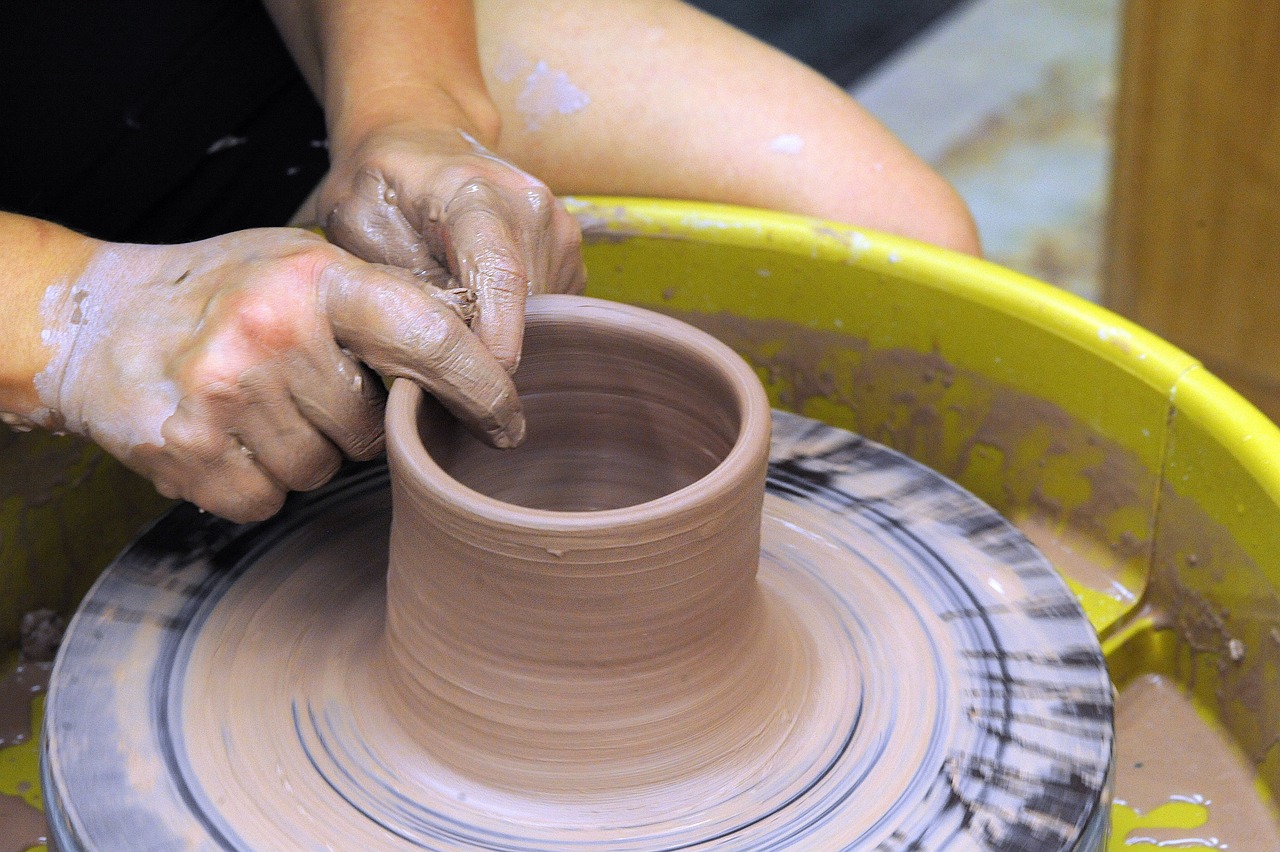
Trade Routes and Pottery Distribution
When we delve into the intricate world of ancient trade routes, it becomes evident that pottery was more than just a functional item; it was a cultural bridge connecting diverse societies. Imagine ancient merchants traversing vast landscapes, their caravans laden with beautifully crafted pots and vessels, each piece telling a story of its origin. These trade routes were arteries of commerce, allowing not just goods but also ideas and cultural practices to flow freely between communities.
Pottery distribution along these routes reveals fascinating insights into the interconnectedness of ancient civilizations. For instance, the famous Silk Road was not solely a pathway for silk and spices; it also facilitated the exchange of pottery styles and techniques. As traders moved from one region to another, they carried with them not only their wares but also the knowledge of how to create them. This led to a fascinating fusion of styles, where local pottery traditions were influenced by external techniques, resulting in unique hybrid forms.
To illustrate this point, consider the following table, which highlights some key trade routes and the types of pottery associated with them:
| Trade Route | Region | Pottery Styles |
|---|---|---|
| Silk Road | Asia | Chinese porcelain, Persian ceramics |
| Roman Roads | Europe | Terra sigillata, amphorae |
| Trans-Saharan Route | Africa | Berber pottery, Sahelian ceramics |
As we can see from the table, different regions exhibited distinct pottery styles that were often influenced by the materials available and the cultural practices of the people. This exchange was not just about the physical objects; it was also about the stories and traditions they carried. For example, a piece of pottery from the Mediterranean might have been decorated with motifs that were completely alien to the artisans in Central Asia, yet through trade, these designs could find their way into new contexts, enriching local traditions.
Moreover, the distribution of pottery along trade routes also sheds light on the economic structures of ancient societies. Pottery was often used as a form of currency or tradeable commodity, making it essential for understanding the economic dynamics of the time. The presence of foreign pottery in archaeological sites can indicate trade relationships, social hierarchies, and even the political landscape of the regions involved. For instance, the discovery of Roman amphorae in a distant land could suggest a thriving trade network and the existence of demand for Roman goods.
In conclusion, the study of trade routes and pottery distribution is a window into the past, revealing how ancient civilizations interacted, exchanged, and evolved. Pottery is not merely a relic; it is a testament to the human spirit of exploration and connection. As we piece together these fragments of history, we gain a deeper appreciation for the rich tapestry of human culture and the ways in which we have always sought to share our stories with one another.
- What is the significance of pottery in anthropology? Pottery serves as a vital artifact that helps anthropologists understand cultural practices, social structures, and historical contexts across various civilizations.
- How do trade routes influence pottery styles? Trade routes facilitate the exchange of goods and ideas, leading to the fusion of different pottery styles and techniques as cultures interact.
- What can pottery tell us about ancient economies? Pottery often acts as a commodity in trade, reflecting economic practices, social hierarchies, and the interconnectedness of ancient societies.
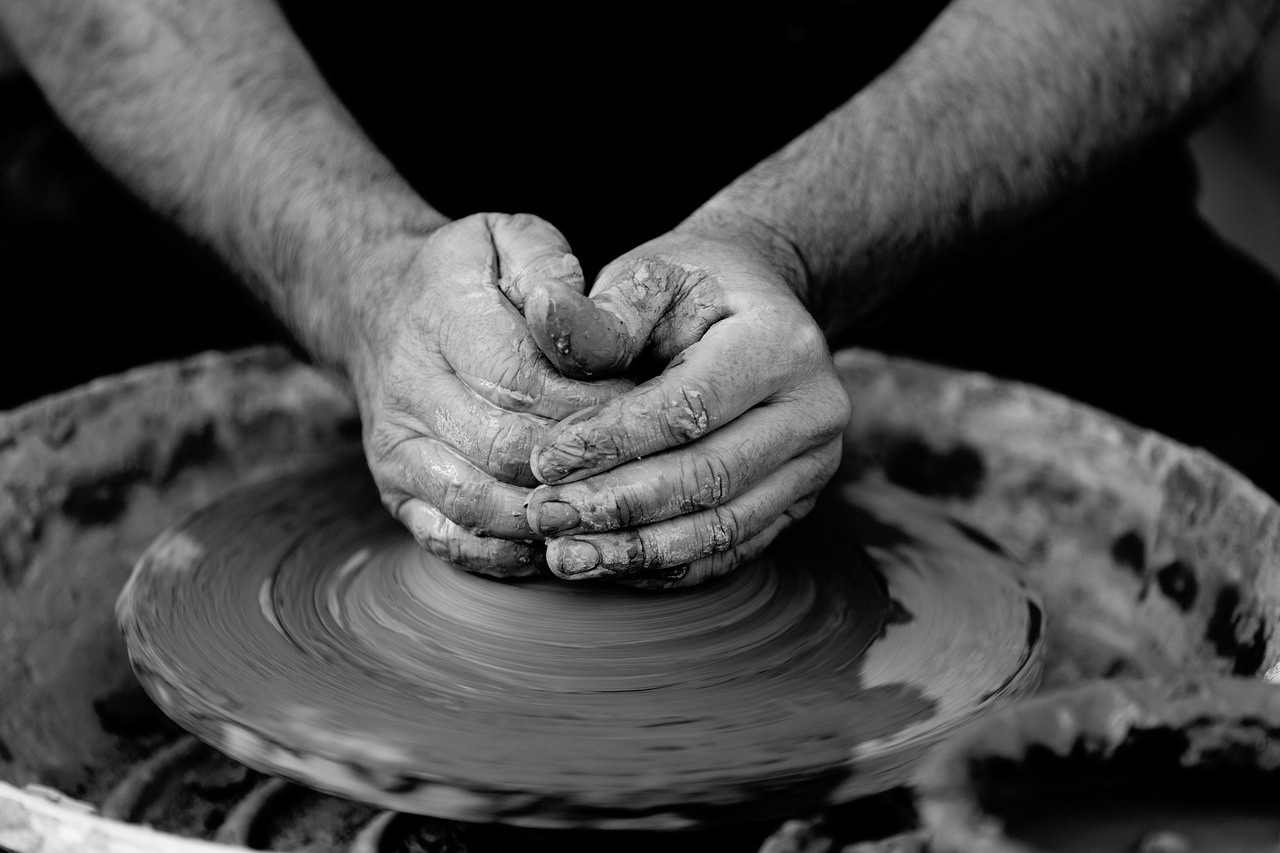
Pottery as a Commodity
Throughout history, pottery has played a crucial role as a valuable commodity in various economic systems. Its significance extends far beyond mere utility; it has been a medium through which cultures express their identity and engage in trade. Imagine walking through an ancient marketplace, vibrant with colors and bustling with activity, where pottery items are not just vessels but symbols of status, craftsmanship, and cultural heritage. The production and trade of pottery reflect the intricate web of social relationships and economic exchanges that have shaped societies.
In many ancient cultures, pottery was more than just functional ware—it was a trade good that held significant economic value. For instance, the production of specific styles of pottery often catered to market demands, with artisans creating pieces that appealed to both local and foreign consumers. This economic aspect of pottery can be observed in various archaeological findings, where the presence of certain pottery types indicates trade relationships and cultural interactions. The ability to produce high-quality pottery not only enhanced a community's economic standing but also fostered a sense of pride and identity among its artisans.
To illustrate the importance of pottery as a commodity, consider the following key points:
- Trade Networks: Pottery was often exchanged across vast distances, linking different cultures and facilitating the flow of goods and ideas.
- Social Hierarchies: The types of pottery owned by individuals often reflected their social status, with more elaborate and finely crafted pieces reserved for the elite.
- Cultural Exchange: The movement of pottery styles and techniques across regions highlights the interconnectedness of ancient societies and their shared cultural practices.
As we delve deeper into the role of pottery as a commodity, it's essential to recognize the various factors that influenced its production and trade. The availability of raw materials, such as clay and pigments, played a significant role in determining the types of pottery that could be produced in a given region. Additionally, the skills and techniques passed down through generations contributed to the uniqueness of pottery styles, making them highly sought after in trade.
Furthermore, the economic impact of pottery trade can be seen in the establishment of specialized workshops and the rise of artisan classes. These workshops not only produced pottery for local consumption but also catered to the demands of distant markets. In this way, pottery became a catalyst for economic development, driving innovation and fostering competition among artisans.
In conclusion, pottery as a commodity is a fascinating lens through which we can examine ancient economies and social structures. It serves as a reminder that even the simplest of objects can carry profound meanings, reflecting the complexities of human interaction and cultural expression. As we uncover more about the trade and significance of pottery, we gain invaluable insights into the lives of those who came before us, enriching our understanding of human history.
Frequently Asked Questions
- What is the significance of pottery in anthropology?
Pottery is a crucial artifact in anthropology as it provides valuable insights into the daily lives, cultural practices, and social structures of ancient civilizations. By studying pottery, anthropologists can unravel the complexities of human behavior and societal development over time.
- How does pottery reflect cultural identity?
Different styles and techniques of pottery serve as a mirror to the cultural identities of societies. Pottery can reveal social norms, rituals, and artistic expressions, showcasing how communities interacted with their environment and each other.
- What materials are commonly used in pottery production?
The materials used in pottery vary by region, often depending on local resources and cultural preferences. Common materials include clay, which can be mixed with tempering agents like sand or straw to enhance durability and aesthetic appeal.
- What are the different techniques of pottery making?
Pottery-making techniques such as coiling, slab building, and wheel throwing showcase the technological advancements and craftsmanship of different cultures. Each method offers unique insights into the skills and innovations of potters throughout history.
- How is symbolism incorporated into pottery?
Pottery often carries deep symbolic meanings and is frequently used in rituals. Specific designs and forms can be tied to cultural beliefs, enhancing our understanding of spirituality and the significance of pottery in ancient societies.
- What role did pottery play in trade and economy?
Pottery was a significant commodity in ancient economies, influencing trade networks and social hierarchies. Its production and distribution reflect broader economic practices, illustrating how societies interacted and exchanged goods.
- How can trade routes be analyzed through pottery?
By examining ancient trade routes, researchers can gain insights into how pottery was exchanged among different cultures. This analysis helps illustrate the interconnectedness of societies and the dissemination of ideas through material culture.
- Why is pottery considered a durable artifact?
Pottery is considered durable because it can withstand the test of time, often surviving in archaeological sites for thousands of years. Its resilience makes it a key resource for archaeologists seeking to understand past civilizations.



















